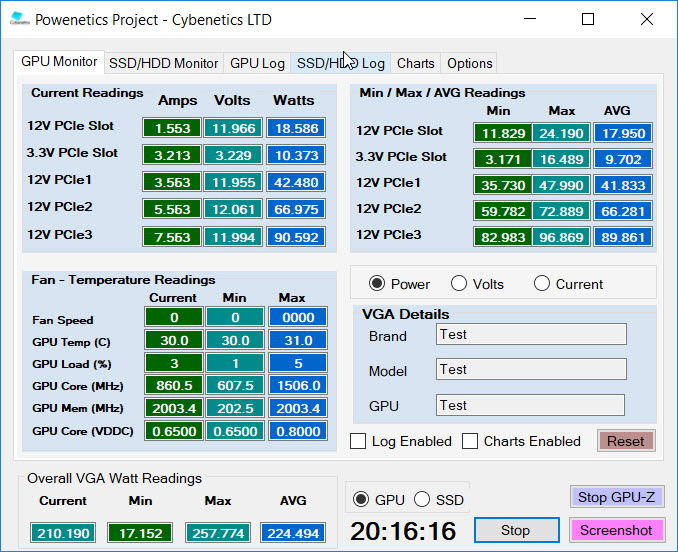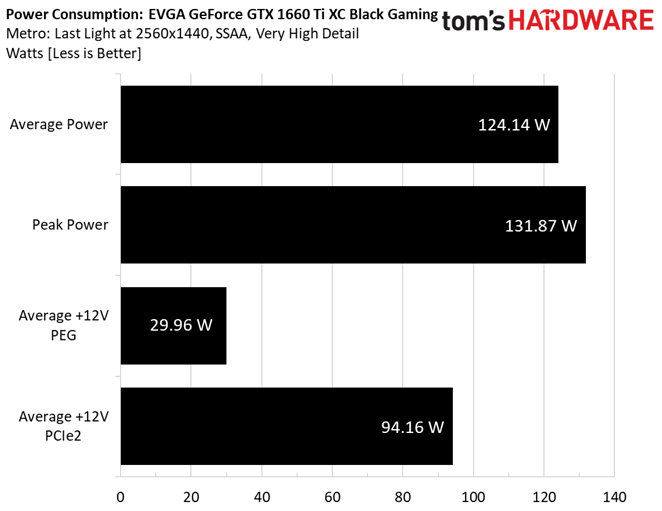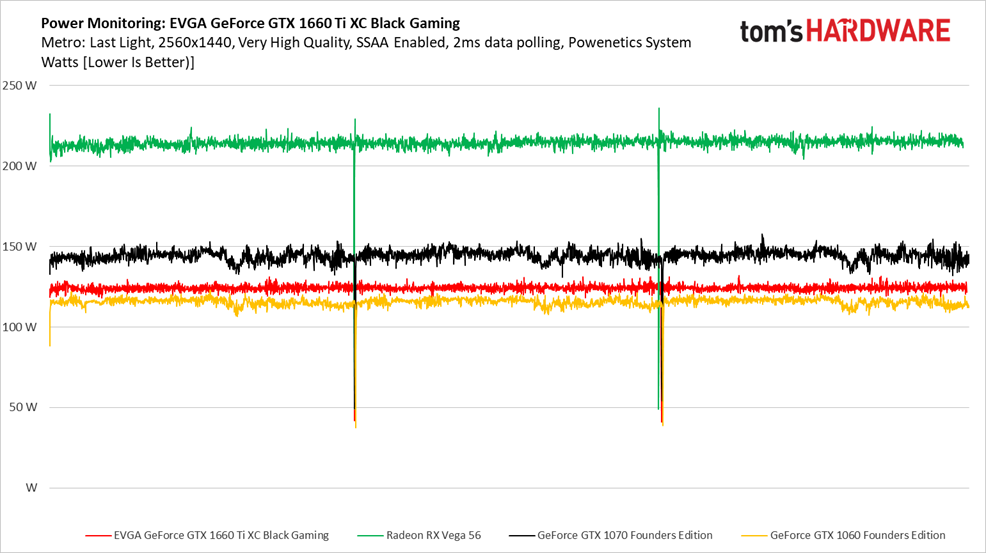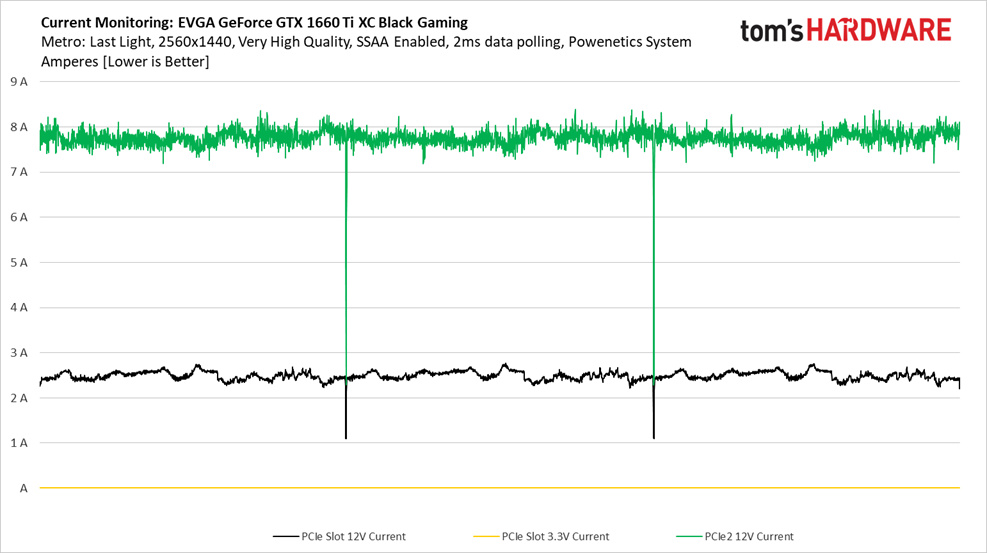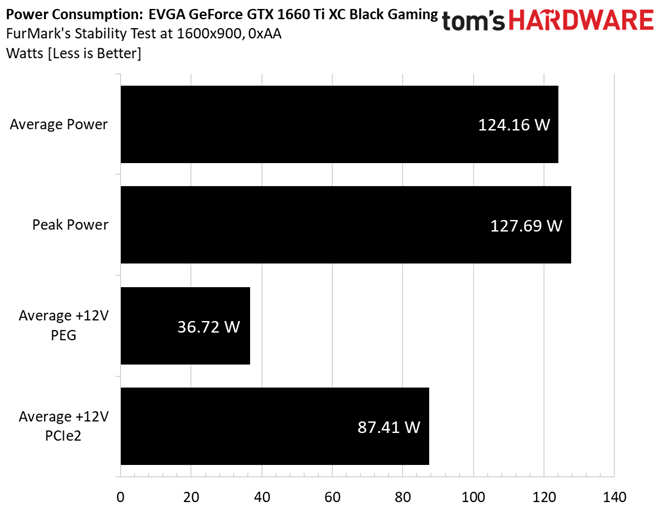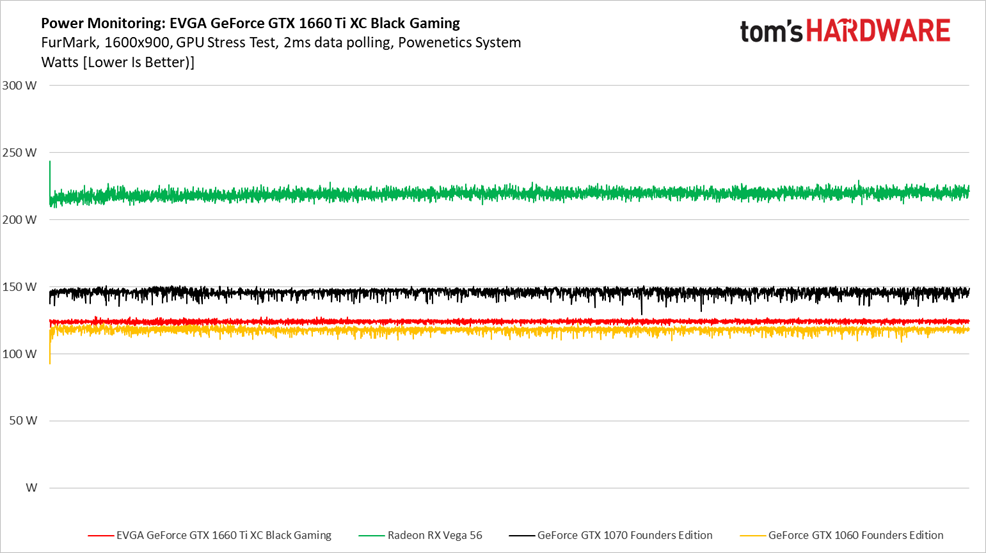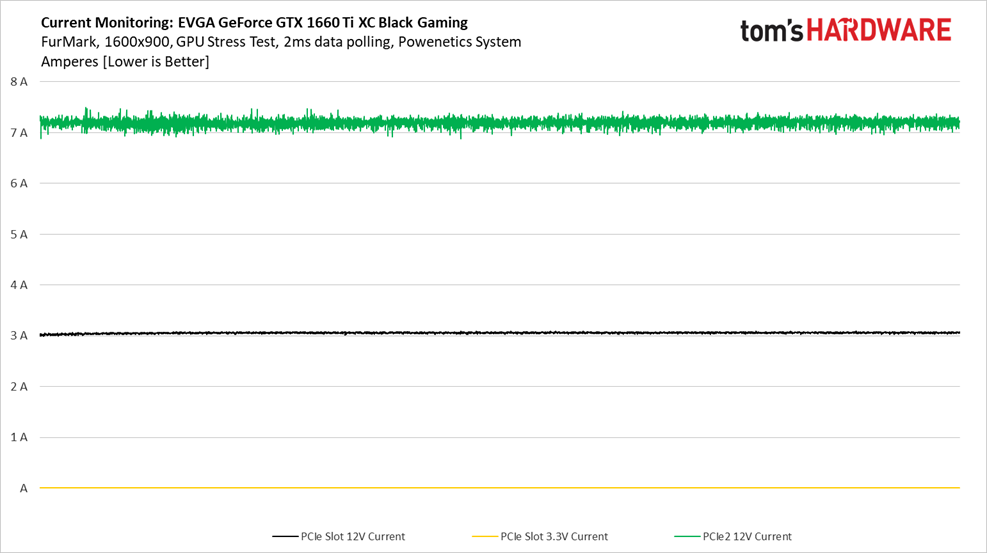Nvidia GeForce GTX 1660 Ti 6GB Review: Turing Without the RTX
The GeForce GTX 1660 Ti is the first not-for-ray-tracing Turing card.
Why you can trust Tom's Hardware
Power Consumption
Slowly but surely, we’re spinning up multiple Tom’s Hardware labs with Cybenetics’ Powenetics hardware/software solution for accurately measuring power consumption.
Powenetics, In Depth
For a closer look at our U.S. lab’s power consumption measurement platform, check out Powenetics: A Better Way To Measure Power Draw for CPUs, GPUs & Storage.
In brief, Powenetics utilizes Tinkerforge Master Bricks, to which Voltage/Current bricklets are attached. The bricklets are installed between the load and power supply, and they monitor consumption through each of the modified PSU’s auxiliary power connectors and through the PCIe slot by way of a PCIe riser. Custom software logs the readings, allowing us to dial in a sampling rate, pull that data into Excel, and very accurately chart everything from average power across a benchmark run to instantaneous spikes.
The software is set up to log the power consumption of graphics cards, storage devices, and CPUs. However, we’re only using the bricklets relevant to graphics card testing. EVGA's GeForce GTX 1660 Ti XC Black Gaming gets all of its power from the PCIe slot and one eight-pin PCIe connector.
Idle
Sub-10W power consumption is a big improvement compared to Nvidia’s higher-end Turing-based cards that idled closer to 20W at launch.
Gaming: Metro: Last Light
Three runs of the Metro: Last Light benchmark give us consistent, repeatable results, making it easier to compare the power consumption of graphics cards.
Get Tom's Hardware's best news and in-depth reviews, straight to your inbox.
An average of 124W is slightly higher than Nvidia’s specification. At least the 131W peak we recorded is not egregious.
EVGA uses the PCI Express x16 slot sparingly, instead leaning on the eight-pin auxiliary connector. No wonder this card eschewed the six-pin connector found on many GeForce GTX 1060s.
Charting power consumption across our three-run benchmark shows the narrow range we’re working with. For the most part, GeForce GTX 1660 Ti behaves itself, which is more than we can say for certain other mid-range graphics cards.
GeForce GTX 1660 Ti uses slightly more power than GeForce GTX 1060 Founders Edition, despite their similar board power ratings. Meanwhile, GeForce GTX 1070, which is the closer performance match, hovers closer to 150W.
Current draw over the PCIe slot varies a bit between 2A and 3A. However, the instantaneous dips and spikes are incredibly small. In comparison, GeForce RTX 2060 pulls closer to 5A from its 16-lane slot, demonstrating a much straighter line across our three-loop Metro benchmark.
There’s quite a bit more noise through the eight-pin connector’s line. Average draw on that rail lands just under 8A.
FurMark
FurMark is a steadier workload, resulting in less variation across our test run. Average power is almost identical, while less room for dramatic swings brings the peak reading down under 128W.
There’s no room for performance to vary in FurMark, so the wavy line chart we saw under Metro: Last Light is gone, replaced by much more consistent power consumption through more than 15 minutes of recording.
GeForce GTX 1660 Ti and 1060 land near each other, yet again. But it’s the GeForce GTX 1070 that EVGA’s XC Black Gaming card more closely resembles in our benchmarks. As you might imagine, the GTX 1660 Ti achieves a better performance/watt ratio.
MORE: Best Graphics Cards
MORE: GPU Benchmarks
MORE: All Graphics Content
Current page: Power Consumption
Prev Page Gaming at 2560 x 1440 Next Page Temperatures, Fan Speeds and Clock Rates-
Ketchup79 In that review they added a link to this review, which should have been the initial link/review for this post IMO:Reply
https://www.tomshardware.com/reviews/evga-nvidia-geforce-gtx_1660_super-sc-ultra -
WildCard999 Reply
Yea this is odd, it should of been 1660 ti > 1660 Super >1650 Super over the last few months.NightHawkRMX said:Why the wait? This card is not new
Edit: Here's a 1660 ti TH review from May.
https://www.tomshardware.com/reviews/gigabyte-geforce-gtx-1660-ti-gaming-oc-6g-turing,6118.html -
TJ Hooker I also noticed that the i5 9600K review article says it was posted today, and has a new comments section.Reply -
Exploding PSU That EVGA GPU is one of the cutest-looking GPU I've seen in a while, I'm thinking of picking one up just from the way it looksReply
